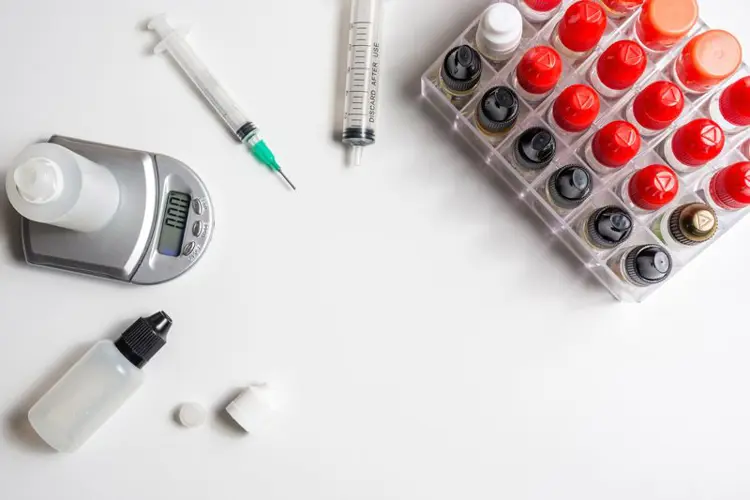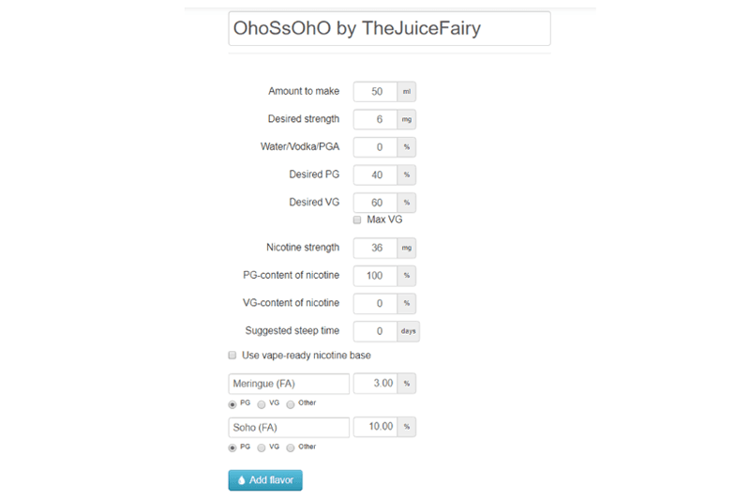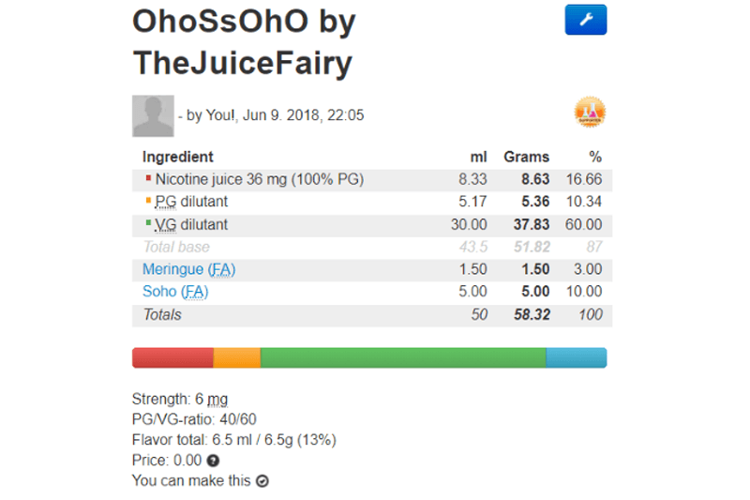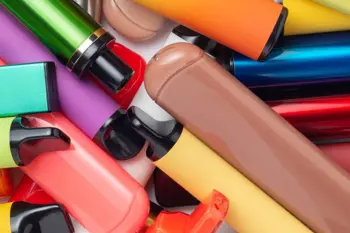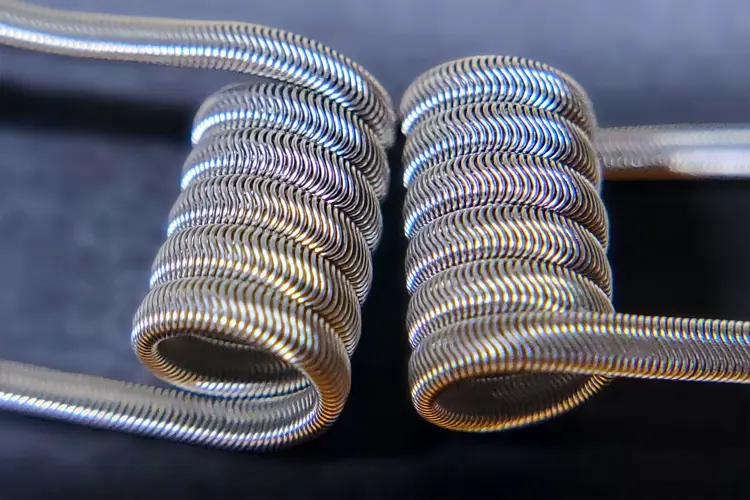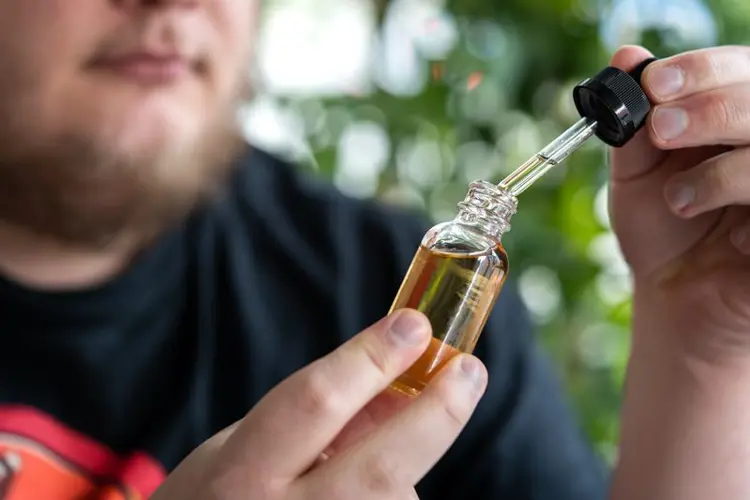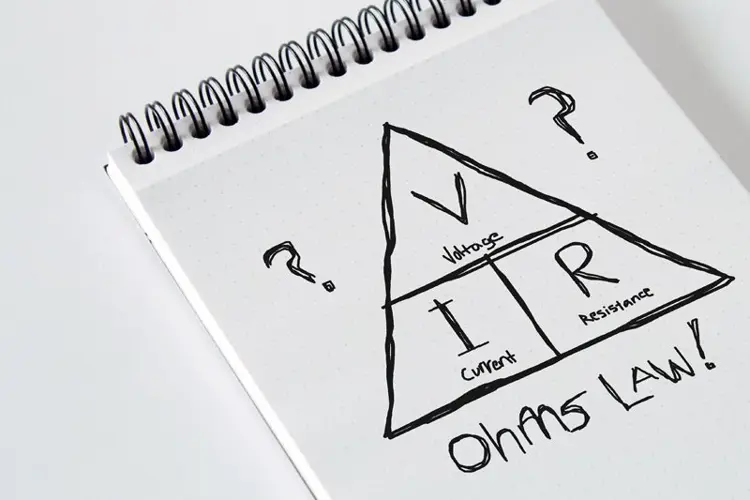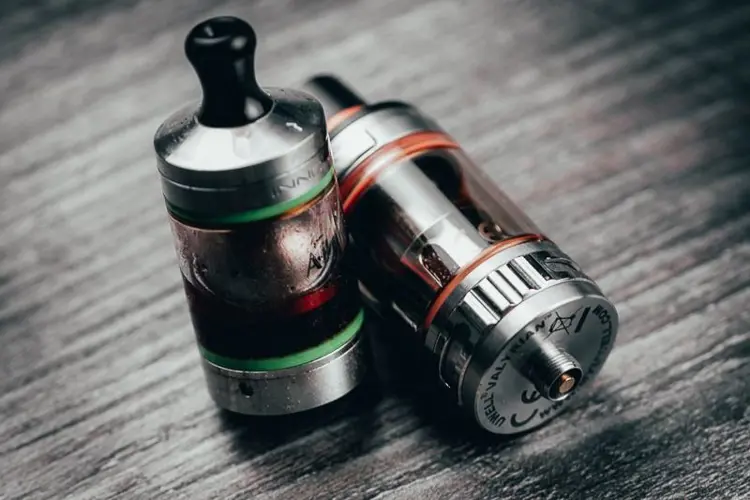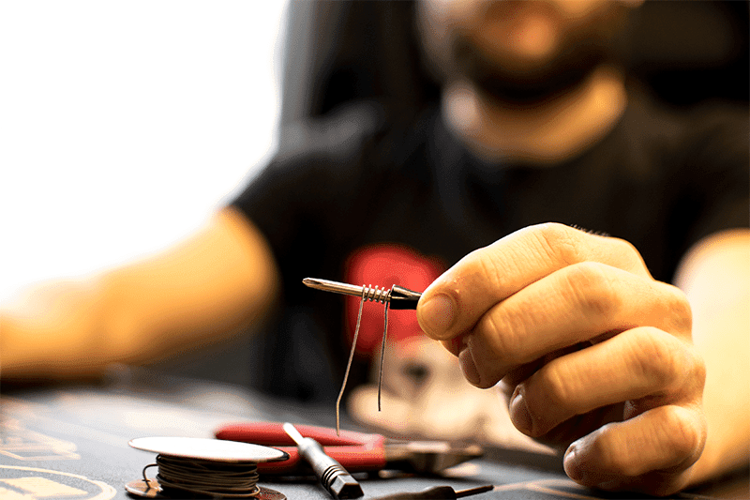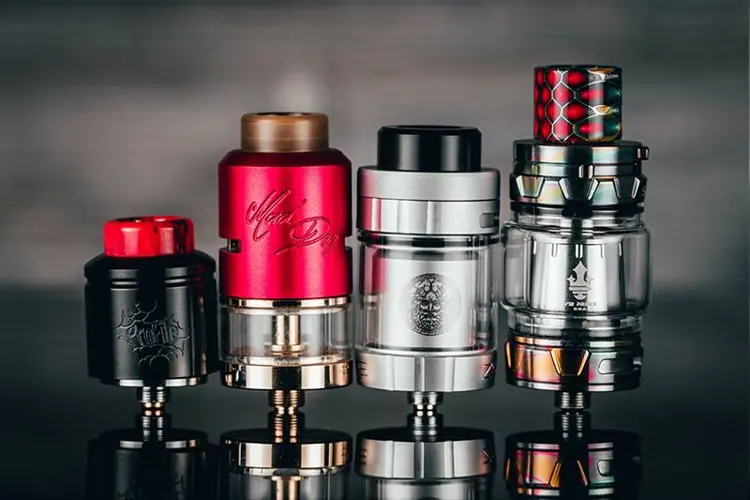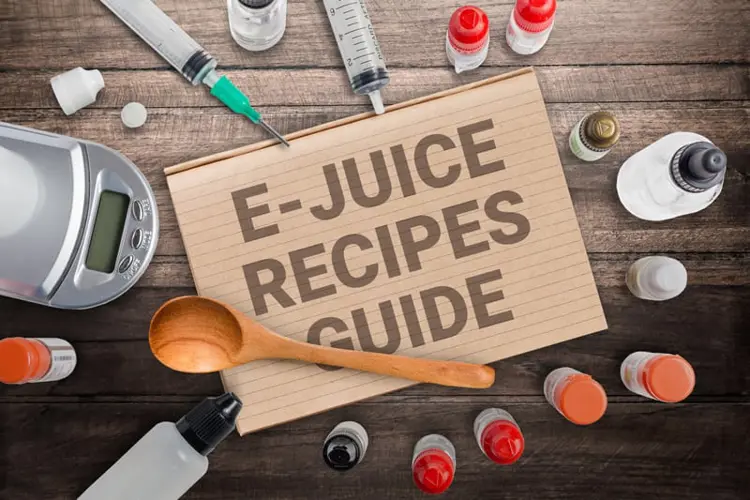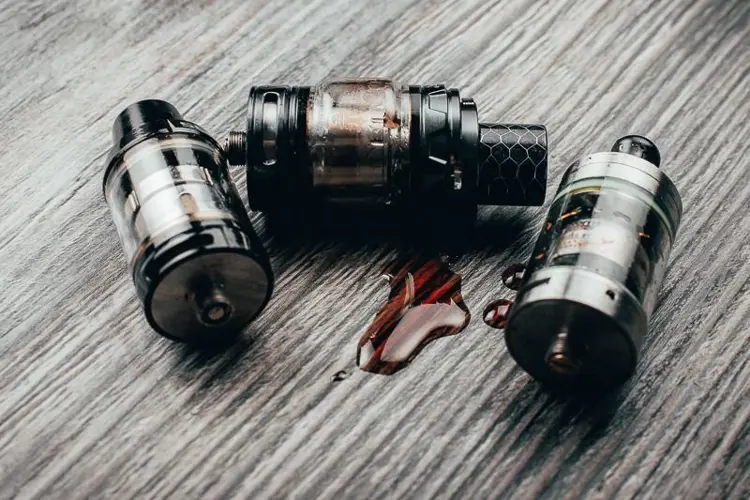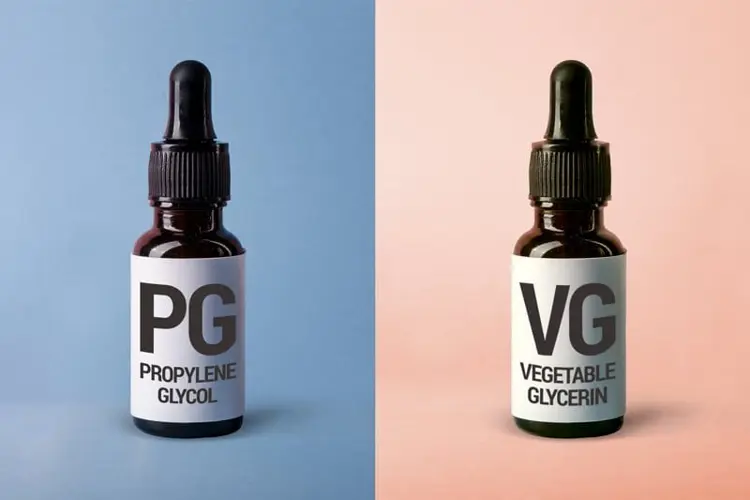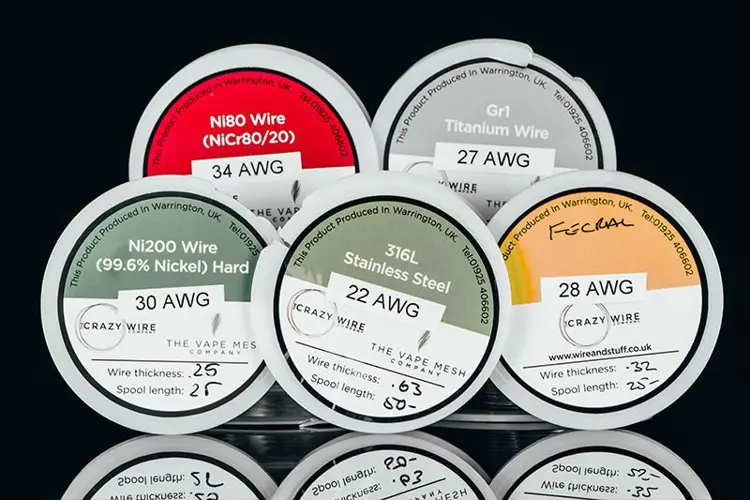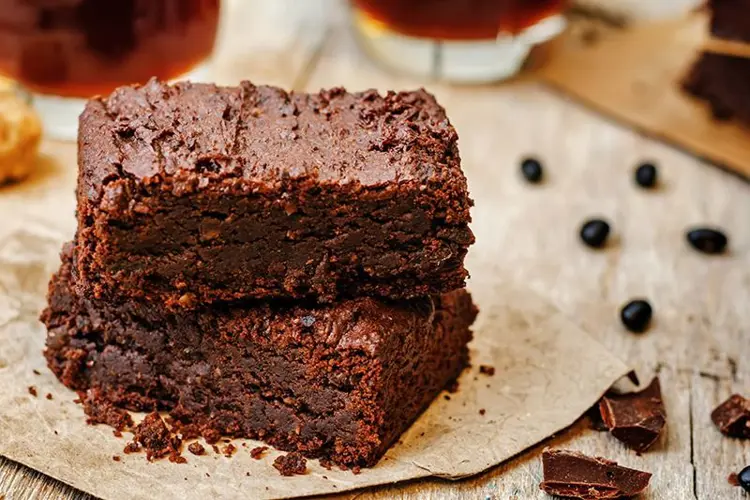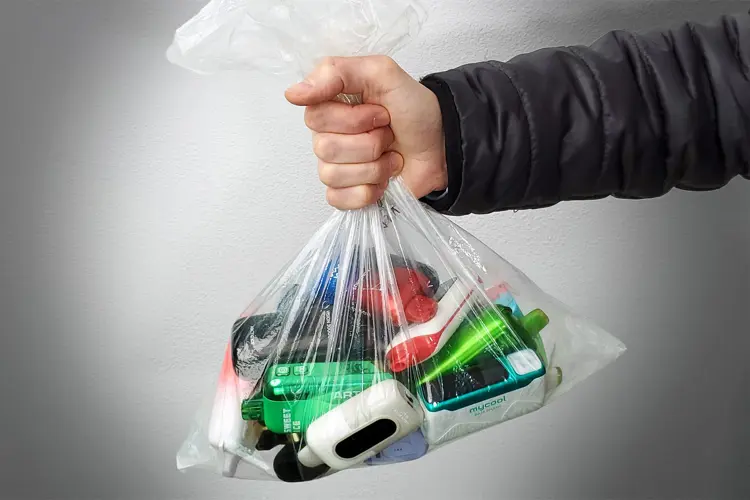DIY vape juice: be the maker and vaper
DIY vape juice is the homemade version of retail e-liquid. The same ingredients are used, but with infinite flexibility and customization. DIY e-liquid is a creative and cost-saving solution to the growing uncertainty surrounding vaping during the last years.
There are cheap e-liquid options on the market, but with flavor bans proposed all over the map, will you still be able to buy vape juice three, six, nine months down the line? This guide will offer you a road map and important information on how to create your own. I’ll cover what supplies and ingredients you need, the different methods of mixing, vape calculators, steeping, tips and tricks, and more.
DIY e-liquid is near and dear to me. It's what sparked my passion for vaping and what helped me kick a 17-year smoking habit. And it all happened by chance: my vape wouldn’t wick 70VG juice, and out of all the options at my local vape shop, I was limited to the 50/50 house blends that weren’t too tasty. I had to take matters into my own hands! What followed was a shocking amount of research, countless experiments, and gallons of DIY juice over the span of five years. After much trial and error, I virtually became my own supplier. And you can do it, too!
If you’re ready to experience this sense of autonomy and accomplishment, let’s begin.
The easiest way to make vape juice
In the simplest terms, making your own e-liquid involves mixing together the main elements that make up e-juice: base liquid of PG and VG, nicotine, and flavor concentrates. You don’t necessarily need all of these, for instance, if you prefer your e-liquid to be nicotine-free or even unflavored. This might all seem overwhelming, but it’s not as bad as you might think. You don’t need advanced knowledge of chemistry. If you can make a cocktail, you can make your own vape juice.
For the simplest way to make vape juice, give this a try:
- Visit an online DIY vape shop (like Ecigexpress, Wizardlabs, etc).
- Get some VG and PG (or get a bottle of pre-made base); get at least 100 mL of each (which should barely be more than a few dollars).
- Add a few 50 mL plastic bottles and a couple of plastic pipettes to your cart.
- Have a look at the DIY vape juice flavorings and pick a few that appeal to you.
- When you get your package, use the pipettes to drip about 10-20 drops of flavoring into one of your empty bottles.
- Fill your bottle up to the middle with PG and the rest with VG.
- Shake and set aside for a few hours to let the bubbles settle.
- Try your vape juice, and adjust to taste.
You now have 50 mL of vape juice that you made! Granted, this is more of a DIY hack and unlikely to result in anything spectacular... but it’s still your own creation. Revel in that for a while. When and if you want to start adding nicotine and getting more creative, this simple entry into DIY should NOT be used. Never eyeball measurements when working with nicotine. There’s little, if any, accuracy DIYing this way, but without nicotine being involved, you don’t have to be as clinical in your approach.
When you’re ready to go all the way into DIY, making or recreating recipes, and mixing down nicotine to your preferred level, the first thing you'll need to decide is which method of mixing you want to use.
Methods to mix DIY e-juice: weight and volume
There are two ways to mix DIY e-juice, and each comes with a set of pros and cons.
Mixing by weight: with the use of a scale, each ingredient is introduced to the mix by weighing it and taking its specific gravity into account. Simply put, an mL of VG is heavier than an mL of PG or an mL of flavoring. Don’t fret about the science though. Just make sure you use a vape juice calculator that factors in these values and let it do the number crunching.
Mixing by volume: this method involves measuring each ingredient’s volume with the use of a large set of syringes (ideally one per ingredient). It is the easiest to understand for a beginner since liquids are normally measured this way, but it’s also less accurate and requires more supplies and cleaning. Calculators are still essential when mixing by volume—they won’t only translate percentages to mL, but will also give you the exact amount of nicotine base you will need to reach the strength you are after. Again, please don't eyeball nicotine when making e-juice!
What do you need to make your own vape juice?
Regardless of the method you are going to use to make your e-liquid, and your preferences for what you would like to vape in the end, you will need the essential vape juice ingredients and DIY supplies. Here is your checklist:
Base liquid – Or in other words, vegetable glycerin and propylene glycol, the two most important ingredients in e-juice. Your base liquid, which is ultimately unflavored zero nic e-juice, can come already premixed in a ratio like 50/50 or 70/30. But if you want to have flexibility over the final ratio of your juice, I would advise buying a liter of VG and 500 mL of PG. Make sure they are both USP grade—it will ensure they are clean enough to use for mixing e-juice.
Vape juice flavor concentrates – These determine what your juice will ultimately taste like. Make sure you only use concentrates made specifically for vape juice and stay away from stuff like essential oils—and any type of oil in general. There are thousands of concentrates to choose from, which can be combined to make countless unique recipes. Brands do matter, and each flavoring has different flavor notes and potency (you can find examples in my e-liquid recipes guide). When starting out, I suggest finding a couple of high-rated recipes that you feel you will like and buying the specific concentrates for these recipes. You can also buy one-shots, where multiple flavors are pre-mixed. These are ideal for beginners, and some major juice makers already sell their own ranges as one-shot concentrates.
Nicotine – Nicotine is optional, of course. The strength of nicotine you choose to buy depends on your preferred nicotine level and your ability to handle the equipment. A 100 mL bottle of 36 or 48 mg/mL nicotine should be enough for beginners. Nicotine is usually suspended in a PG solution, but you will be able to find it in different ratios if you shop around. Be very careful when handling and storing nicotine. Its efficacy as a poison tends to be overstated, but make sure you keep high-strength nicotine away from your skin and your face. Always use gloves when handling nicotine, and please keep your nicotine bottles out of children’s reach.
- Storage bottles – Store your base liquid in individual squeeze bottles with nozzle tips to make it easy to add to your homebrew. A couple of 100 mL condiment bottles should be ideal. If you use nicotine, store your nicotine in amber or cobalt glass bottles—the dark color and solid glass help slow the degradation.
- E-juice bottles – For your early experiments, buy a selection of 10 mL plastic bottles for test recipes and some 60-120 mL bottles to make larger amounts of your favorite homebrew e-liquid. PET and HDPE plastic are great choices for long-term storage, but LDPE should also do the trick. These are cheap and widely available.
- Labels – Buy some cheap sticky labels to write the details on before sticking to the bottle. In time, you may find it easier and more polished to use a label maker such as the Dymo 160.
- Gloves – Always have a box of disposable gloves handy. These are invaluable and available at any corner pharmacy.
The rest of the equipment depends on the mixing method you will choose to follow:
- Syringes for mixing by volume: I advise getting some 10-30 mL syringes for your base liquid and plenty of 1-5 mL syringes for nicotine and flavor concentrates. You’ll also need some needles—I recommend 14 gauge to make dealing with thick VG easier.
- A scale for mixing by weight: you’ll need an electronic scale with a 0.01-gram precision. This is accurate enough to deal with all DIY e-liquid recipes. You should also make sure that the scale can weigh at least up to 200 grams, and ideally 500 grams—you may think that 100 grams is enough, but if you ever decide on mixing larger quantities or if you are using glass bottles, you will need the extra headspace. If you want a reliable and affordable scale, the American Weigh Scales LB-501 is considered the golden standard by most DIYers out there. It weighs up to 500 grams in 0.01-gram increments, and it comes with calibration weights and a 10-year warranty. Finally, you will need at least one syringe or a pipette for your nicotine—this way you can have more accurate results and avoid nicotine spills.
Ingredients to avoid
Here’s a list of ingredients that people often wonder if they should use in their vape juice, but they absolutely shouldn’t:
- Any type of flavoring that’s not widely used in vape juice DIY (potentially dangerous)
- Essential oils, and any type of oil (certainly dangerous)
- Any type of household item that might seem like a good idea (it is not)
- Very high-strength nicotine (unless you work at a lab)
Two ingredients that have been the subject of debate in the DIY community are distilled water and vodka. People have been using them to dilute e-liquid, but with today’s vape gear they have been rendered practically useless. Some swear that water helps with flavor, but I can tell you from experience that it will make your vape pop and spit. I strongly advise staying away from anything other than VG and PG when it comes to base e-liquid.
DIY vape juice kits
If you’d prefer to get all your DIY supplies in a bundle, there are many kits out there to choose from. Most beginner DIY kits will come with all the essentials you need to get started.
The vast majority of DIY kits are bundled for mixing by volume and will include a variety of syringes along with the essential e-liquid ingredients. If you are undecided between weight and volume, buy a starter kit and a scale. This way, you can give both a try and decide what’s best for you. But even if you have already decided to mix by weight, buying a DIY starter kit wouldn’t hurt. Chances are you will end up using all the products included in the kit in due time.
E-juice calculators: an essential tool
If you want to mix accurately and have replicable results, you will need to use a vape juice calculator. A calculator simplifies the whole process by giving you all the info you need, be it the amount of nicotine needed to reach your favorite strength, or how much from each ingredient you will need to end up with a bottle of tasty 70/30 e-juice. It may sound challenging, but it’s super simple once you get the hang of it.
Many calculators are web-based, while others are available to download on mobile or desktop.
One of the easiest to use and most popular is the web-based calculator of E-liquid-recipes.com (ELR). It is super simple to use once you get the hang of it and has a huge recipe database and even a forum where you can ask questions or discuss all things DIY. One of the most useful features of the website is the “what can I make?” button under the “flavor stash” section. Once you have your flavors added to your account's stash, you can get a list of recipes that use only stuff from your flavor stash!
If, for some reason, you don’t want to use a web-based calculator, here are two more options for you:
eJuice Me Up (desktop) — an easy-to-use offline desktop-based calculator that saves your recipes locally. If you are planning on using it for mixing by weight, make sure you click on Tools and then Grams Set. To save some time, I suggest using ELR's default values there:
- PG: 1.036 g/ml
- VG: 1.261 g/ml
- Flavoring: 1.000 g/ml
- Nicotine: 1.036 g/ml (if PG-based), 1.261 g/ml (if VG-based)
Vape Tool (Android) — a beginner-friendly app for all things vaping. Just visit the "E-liquid Blender" section of the app, and the rest will be self-explanatory. Note that this app is very useful for wrapping coils too (the "Coil Calculator" section), and it is one of the longest-lasting vape apps at the Play Store.
All set? Time to make some vape juice!
So you got yourself all the required ingredients and supplies, and it’s now time to start mixing. Some people like to start using their gut feeling, but from my personal experience, that’s not the best idea. Check out mye-liquid recipes guide, or go to ELR or ATF and rank recipes by ratings for some tried and true mixes. For the sake of this example, I will be using a very simple two-flavor mix—ELR user’s TheJuiceFairy OhoSsOhO (Tribecca-ish) recipe, calling for 3% FA Meringue and 10% FA Soho—a sweet caramel and nut-infused tobacco.
Head over to ELR’s calculator. Start by filling in the milliliters, nicotine (in mg), and the base liquid ratio of the final product you’re shooting for, and the strength and ratio of the nicotine you have in hand. For this example, I am going for 50 mL, 60VG, and 6 mg of nicotine, and I am using a 36 mg 100% PG nicotine base. Then add the percentages of the flavors you will be using—note that if you are using an existing ELR recipe, you can skip the last part by pressing on the blue wrench icon and clicking on “Adapt this”.
The amounts of the ingredients you’ll need to mix will appear at the bottom of the page. These appear in three columns: mL, Grams, and %. Under that, you can see the “stats” of your juice.
Now that you have all the numbers, you can put your gloves on and start mixing!
If you are mixing by weight, you’ll need to use the values inside the “Grams” column. Turn on your scale, place the plastic bottle on it, and press the “tare” button to set it back to 0.00 grams. Then add the listed amounts of each ingredient, pressing “tare” after each one. I usually go nicotine, flavors, VG, PG to eliminate possible errors, but it’s up to you.
If you are mixing by volume, use the values of the “mL” column. You should ideally use one syringe per ingredient, but make sure you have at least three syringes for this recipe—one for your nic, one for VG/PG, and one for flavorings. I used to skip measuring VG when I was mixing by volume, and you could also do that if you know exactly how much liquid fits in your bottle. My 50 mL bottles could go up to 54 mL, so I was mixing 50 mL of juice with 4 mL of breathing space at the top. Not the most accurate way to mix, but it did save me some time. When done, make sure you clean your syringes. I suggest using distilled water for that part and letting them dry for a while.
Once done, put the cap on and shake your bottle for a couple of minutes. Congratulations, you now have your first homemade bottle of DIY e-juice! What now?
Post mixing: what to do after you make your juice
Labeling – Label your mixes with the following: VG/PG ratio, nicotine level, flavor percentages, and date created. Do this immediately. You’d be surprised how many beginners don’t, only to be stumped when they find a perfect blend but with no way of recreating it. Save your recipes in a notebook, spreadsheet, or on e-liquid-recipes.com.
Steeping – This often confounds newcomers to the DIY e-juice world. Most homemade e-juice containing more than one concentrate needs a certain amount of time to let the flavors blend and settle. This varies with every mix, but you’ll often find multi-layered dessert or cream-based mixes need up to four weeks to reach their best, while simple fruit recipes might not need to steep at all. Most recipes come with a recommended steeping time. There are various methods that aim to speed up the steeping process—but these are a subject of much controversy in the DIY e-juice community.
Testing – Once your e-juice has steeped, it’s time to test it out. It’s best to use a good quality dripper or rebuildable atomizer rather than a tank. This will give you a better idea of how your juice tastes, will save you from wasting coils on failed experiments, and allow you to sample different juices quicker. Be aware that resistance and temperature can greatly affect the taste—juice that tastes great at 80 watts on a 0.3-ohm RDA vape is likely to taste very different in a 1.8-ohm tank at 15 watts.
Storage – Sunlight, heat, and oxygen can have a negative impact on e-juice so keep your homemade juice in a cool dark place. And make sure they’re safely out of reach of pets and children.
Tips and tricks of DIY e-juice
Take full advantage of online tools and resources. Reddit has many subs dedicated to DIY and e-liquid-recipes.com offers much more than its calculator. One of its most useful features is the flavor stash—input your stockpile and ELR will come up with a list of e-juice recipes you can make.
Less is more! Using larger amounts of flavor doesn’t necessarily translate into a more flavorful vape. In some cases, overdoing it will end up muting the flavor of your e-liquid!
When following existing recipes, avoid directly replacing concentrates between brands. One brand’s “Peach” might be a realistic ripe peach while another’s might be a candy or a canned peach. And flavor profile is not the only reason you should avoid replacements…
Be aware of how potent your concentrates are. Potency varies not only between brands but even for flavorings of the same brand. Companies like Flavourart and Inawera are notorious for their potent concentrates, where 1-2% is more than enough to dominate a recipe—but even some of theirs can be used in the 5-10% range. A good indicator of potency is the “average mixing quantity” percentage, which can be found on each flavor’s page at ELR.
Take Notes – After testing, make plenty of notes, either online or in a notebook. Is one note too strong? Would it be better as a 50/50 blend rather than max VG? Keeping detailed notes will help improve your future e-liquid mixes and vastly help your homebrew/DIY e-juice skills.
Single flavor testing – want to find out how each concentrate will affect your mixes? The first step is to vape it on its own. Go by ELR’s recommended percentages if you are not sure where to start from.
Remember, like with any hobby, e-juice DIY can be as simple or as complicated as you want it to be. You can mix a simple vape juice in less than a minute, or spend months trying to come up with the best ten-flavor combination for a traditional Thai dessert e-liquid. It’s all up to you. Have fun with it.
President Trump promised during his election campaign to “save vaping," but his administration has undermined that goal at every turn.
The U.S. disposable vape market has grown to $2 billion in annual sales, although nearly none of the products are authorized by the FDA.
More than 30 bills that would impose severe restrictions vaping consumers’ product choices remain active in U.S. state legislatures.
The Freemax REXA PRO and REXA SMART are highly advanced pod vapes, offering seemingly endless features, beautiful touchscreens, and new DUOMAX pods.
The OXVA XLIM Pro 2 DNA is powered by a custom-made Evolv DNA chipset, offering a Replay function and dry hit protection. Read our review to find out more.
The SKE Bar is a 2 mL replaceable pod vape with a 500 mAh battery, a 1.2-ohm mesh coil, and 35 flavors to choose from in 2% nicotine.

